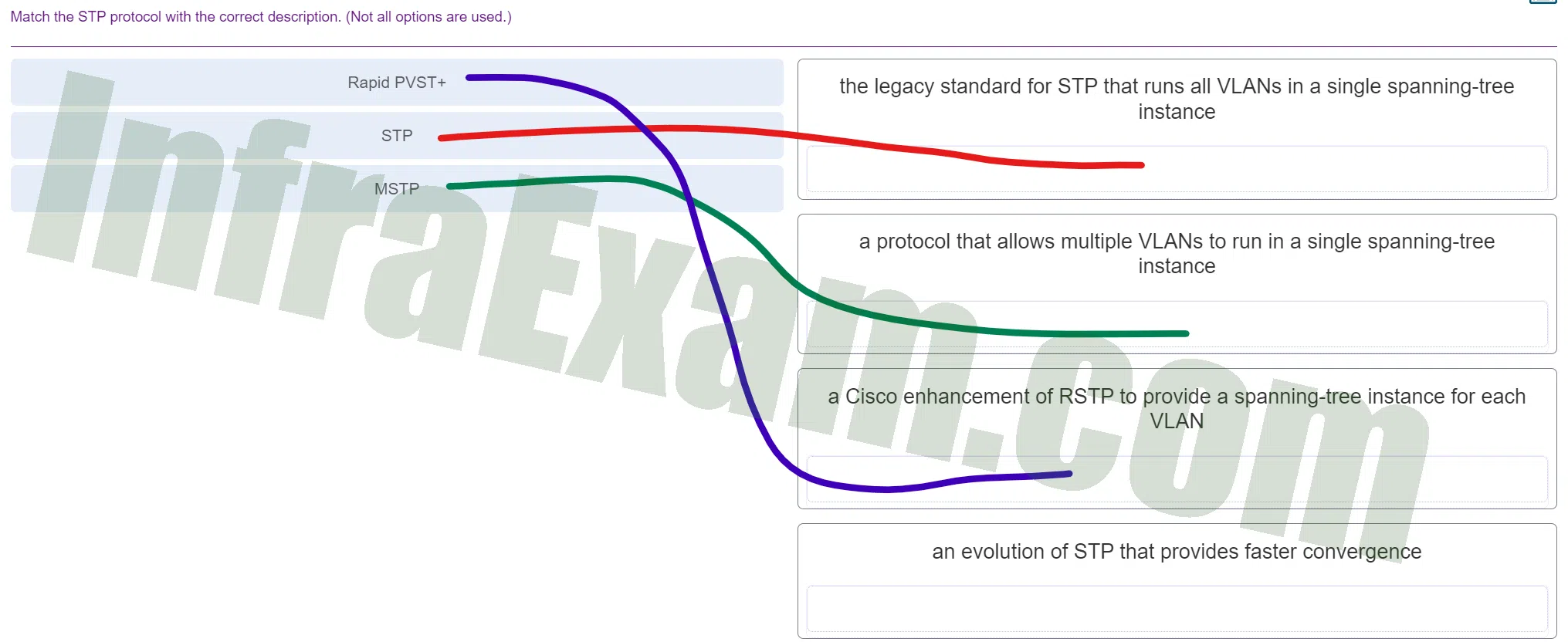Explanation & Hint:
Rapid PVST+ (Per-VLAN Spanning Tree Plus):
- Rapid PVST+ is an extension of the original PVST+ (Per-VLAN Spanning Tree Plus) protocol. It’s a Cisco proprietary enhancement to the Spanning Tree Protocol (STP) that was developed to provide faster convergence and improved redundancy in VLAN-based Ethernet networks.
- Unlike standard STP, which operates with a single spanning tree for the entire network, Rapid PVST+ creates a separate spanning tree for each VLAN. This allows for load balancing and redundancy on a per-VLAN basis.
- Rapid PVST+ incorporates features of the IEEE 802.1w Rapid Spanning Tree Protocol (RSTP) for faster convergence, ensuring that network topology changes are quickly adapted to without causing downtime.
STP (Spanning Tree Protocol):
- STP is a network protocol that prevents loops in Ethernet networks by creating a loop-free logical topology. Loops can lead to broadcast storms and other network issues, so STP is used to ensure that only one path exists between any two network devices.
- STP works by designating a single switch as the “root bridge” and then determining the best paths from each switch to the root bridge. It does this by placing some switch ports in a blocking state, preventing traffic from traversing certain paths. When a link or switch fails, STP recalculates the topology to reestablish a loop-free network.
- The original STP, defined by IEEE 802.1D, is relatively slow in adapting to changes in the network. Variants like RSTP (Rapid Spanning Tree Protocol) and MSTP (Multiple Spanning Tree Protocol) were developed to address these limitations.
MSTP (Multiple Spanning Tree Protocol):
- MSTP, also known as IEEE 802.1s, is a standardized and vendor-neutral extension of the Spanning Tree Protocol. It was developed to address some of the shortcomings of the original STP and provide a more efficient way of managing multiple VLANs in a network.
- MSTP allows network administrators to group VLANs into one or more instances (also called “regions”), where each instance has its own spanning tree topology. This allows for better load balancing and redundancy control, especially in networks with a large number of VLANs.
- MSTP is more efficient than running separate instances of STP for each VLAN (as done in PVST+ or Rapid PVST+). It reduces the number of spanning tree instances and provides more granular control over which VLANs are grouped together.
In summary, Rapid PVST+ is a Cisco-specific enhancement of STP, STP is a protocol used to prevent network loops, and MSTP is a standardized enhancement that provides a more efficient way to manage multiple VLANs in a network.
|
